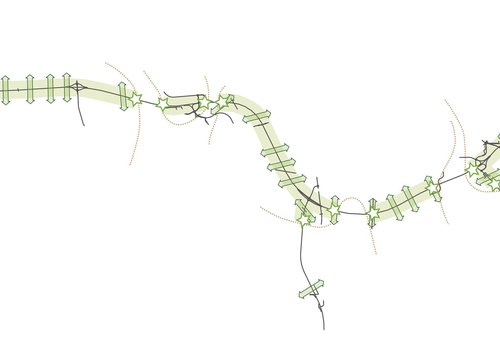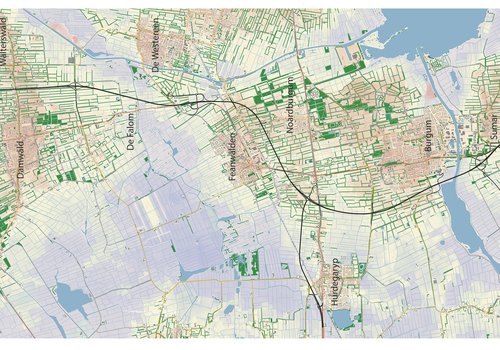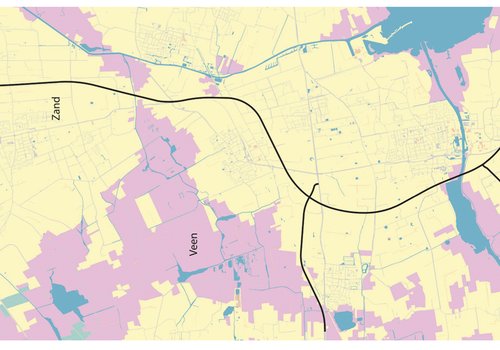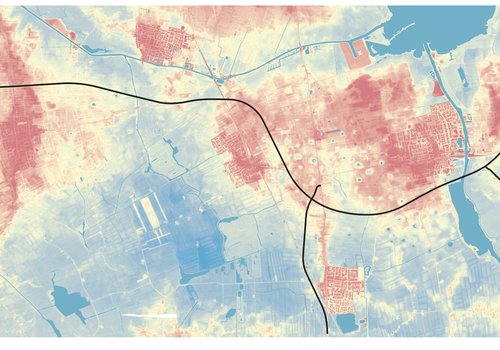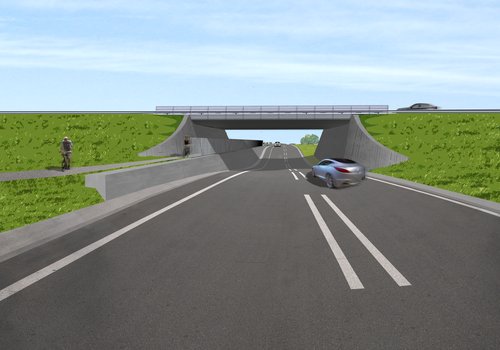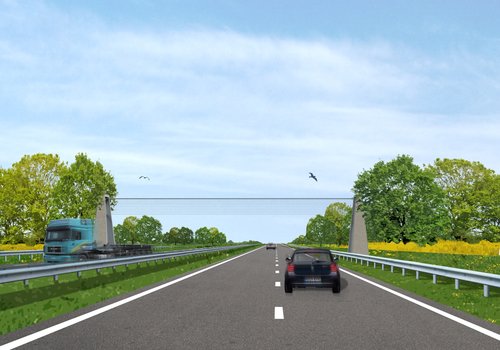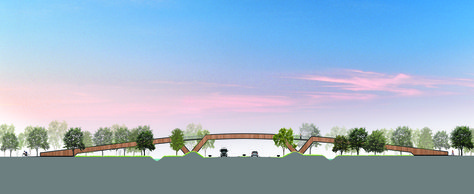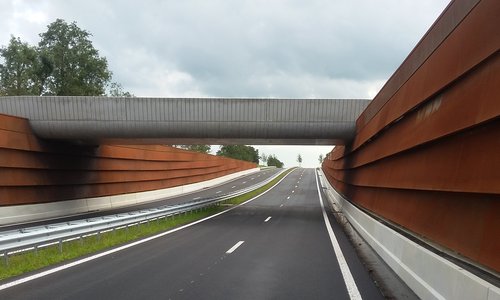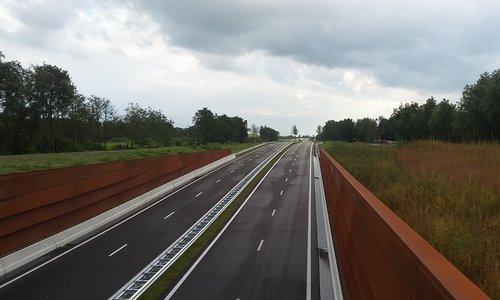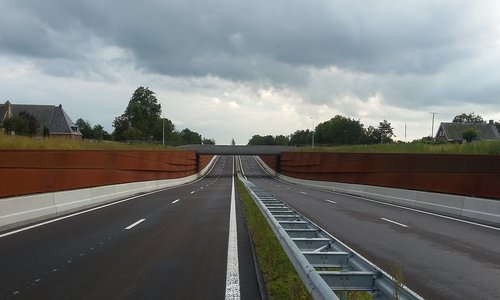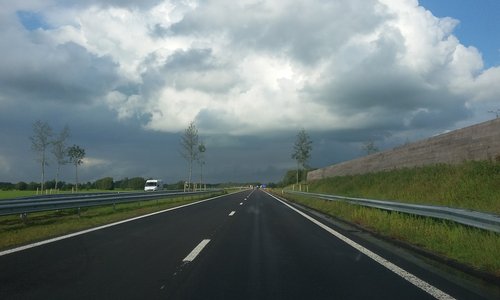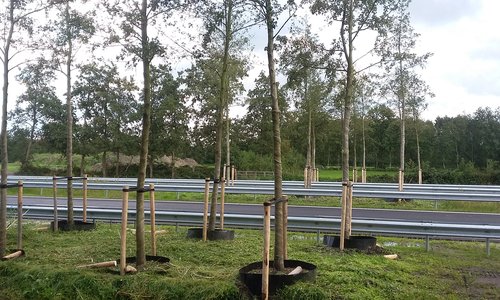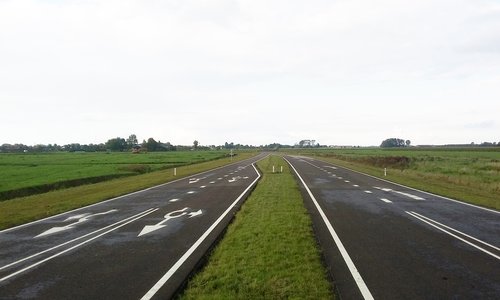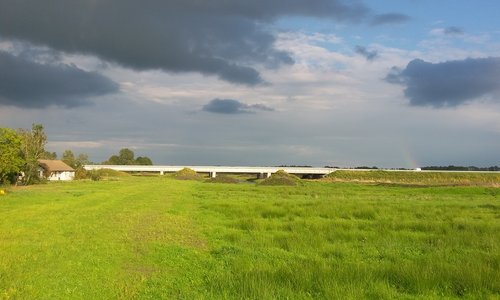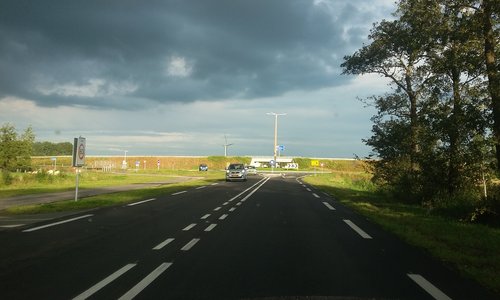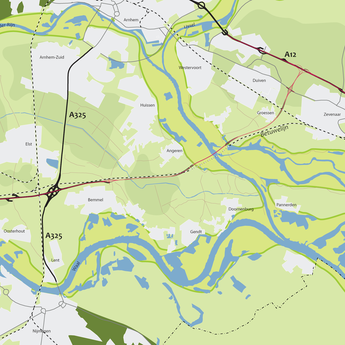Integral design hop overs
In addition to the experiential value the crescent structures also have an important conductive function for bats. Through the sonar they use the vegetation as a flight route. In order to secure the continuity of the flight routes large trees are planted in the roadside and central reserve to function as a natural crossing (hop over).
Darkness is leading
At an early stage in the design phase a light plan was developed for the entire route in cooperation with Arup. In the integral light plan retaining the darkness is leading. The principle is to have as little street lighting as possible. Consequently energy consumption remains low and adverse effects on the ecological system will be limited. A nocturnal image is created in which the Central Axis itself is not illuminated but the local roads.

